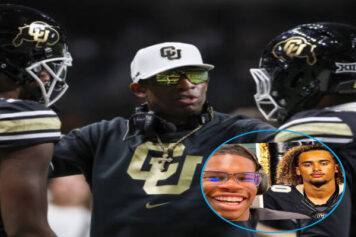All month long we have heard talk of diaper dandies, sophomore slumps, jubilant juniors and scintillating seniors, but for far too many young men, the game of college basketball has far more to do with basketball than with college.
Every year around this time, Dr. Richard Lapchick and The Institute for Diversity and Ethics and Sport at University of Central Florida releases their annual study, “Keeping Score When It Counts: Academic Progress/Graduation Success Study of 2017 NCAA Division I Men’s and Women’s Basketball Tournament Teams.”
The study compares the graduation rates and academic progress rates for Division I teams that have been selected for the men’s and women’s brackets of the 2017 NCAA Basketball Tournament. The study compared the academic performance of male and female basketball student-athletes, and of African-American and white basketball student-athletes, by examining the Graduation Success Rates (GSR) and the Academic Progress Rates (APR) for the tournament teams. The women graduated at a rate of 90% vs. 76% for the men.
There was one men’s team in the tournament with an APR below a 930 while the women had none. Lapchick also noted that 23 women’s tournament teams had a graduation rate of 100 percent. There were no men’s teams with a perfect graduation rate and only one team had an APR of 1000. Except for Robert Morris University and Texas Southern, all of the women’s teams graduated at least 60 percent of their student-athletes.
Creighton and Bucknell had a team in the women’s and men’s tournament with a graduation rate of 100 percent. These were the only such examples. Overall, African-American male basketball student-athletes on tournament teams graduated at 74 percent compared to 93 percent of white male athletes graduating.
The study also noted that the gap between white and African-American student-athletes has always been significantly smaller on women’s teams than on the men’s teams. That disparity decreased by a percentage point and currently is at 9%. Unfortunately, the gap between Black male basketball players and their white counterparts has increased by a percentage point to 19%.
We love the all the things that make college basketball special: the bright lights, the rivalries, the Cinder-fella stories, and the agony of defeat. These numbers give us a really good idea of just how well these schools have been keeping up with their end of the collegiate basketball bargain: education. Realistically, only a very small percentage will play professional basketball and a degree is in their best long-term interests.
Here are the numbers from Dr. Lapchick’s study for this year’s Final Four participants. If we’re going by these, Gonzaga’s your national champion.
***
Oregon: APR 945, Overall Men’s Basketball Student Athlete Graduation Success Rate 38, African-American Success Rate 50, White Graduation Success Rate 67, Overall Graduation Success Rate 80
University of North Carolina, Chapel Hill: APR 974, Men’s Basketball Graduation Success Rate 50, African-American Graduation Rate 50, White Graduation Success Rate, 60, Overall Graduation Success Rate 100 and Overall Student-Athlete Graduation Rate 82
Gonzaga University APR 995, Men’s Basketball Graduation Success Rate 90, African-American Graduation Success Rate 100, White Success Rate 100, and Overall Graduation Success Rates 98.
South Carolina: APR 947 Overall Men’s Basketball Student Athlete Graduation Success Rate 67, African-American 67 White 100 and Overall Student Athlete Graduation Rate 85.
For the full report: http://www.tidesport.org/



